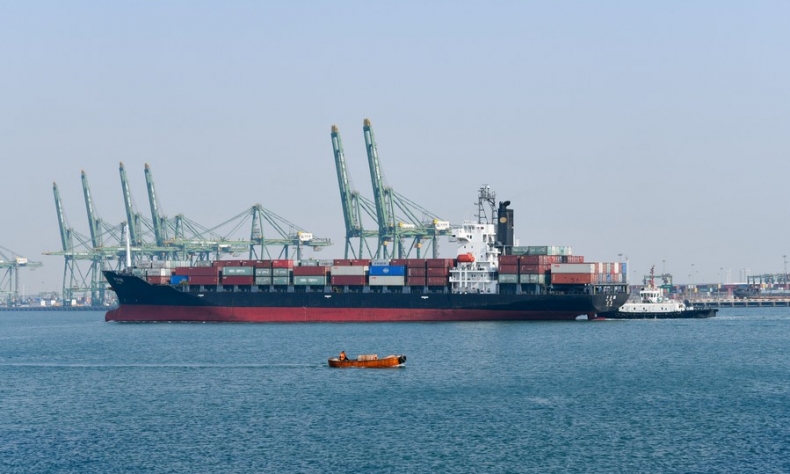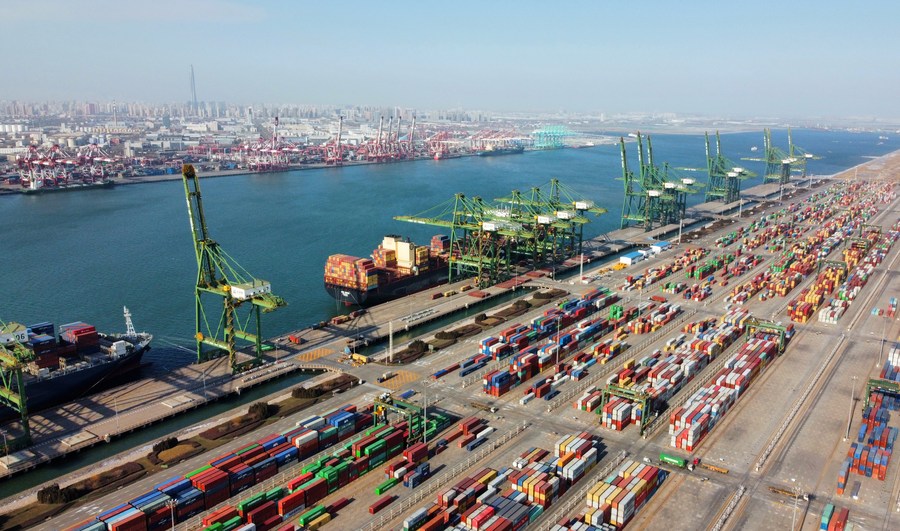A Pivot in Recovery

An RCEP member, China is to further open up to the outside world and increase its imports and exports, rendering itself even more vital to the world economy.
According to statistics from Chinese Customs, China’s total imports and exports surpassed $6 trillion in 2021, up 30 percent year on year. With a global economy dragged down by the COVID-19 pandemic, China is making its due contributions to stabilizing the world’s commercial development. Without the significant records of China’s foreign trade, the global economic picture would surely have taken a turn for the gloomier.
Some might argue that the world’s top economic power, the U.S., marks the backstop for the global economy, but reality holds it has failed to play the part. Instead, by taking advantage of the dollar as an international currency, it is recklessly printing money to create a bogus boom and transferring its internal crises onto external parties. In the past six months alone, it has printed $3 trillion worth of greenbacks, resulting in soaring domestic inflation, national debts, fiscal deficits and an expanding risk exposure at home, all the while undermining economic stability abroad.
Based on the latest statistics, China’s contributions accounted for 25 percent of the world’s economic growth in 2021, much higher than those courtesy of the U.S. In contrast to the trade protectionism upheld by the latter, China pursues a principle of multilateralism and free trade. Apart from supplying materials to battle the lingering pandemic, China is continuing efforts to stabilize the global supply chain. The nation’s dual circulation diagram, in which domestic and overseas markets reinforce each other with the domestic market as the mainstay, closely connects internal and external markets to alleviate the havoc the U.S. has wreaked on the world economy.
Major economies like the EU, the UK, the U.S., the Association of Southeast Asian Nations (ASEAN) and Japan are major engines of global growth. China’s trade with these economies in 2021 saw stable development. China’s trade with ASEAN, the EU, the U.S., Japan and the Republic of Korea increased by 19.7, 19.1, 20.2, 9.4 and 18.4 percent, respectively. Meanwhile, China’s exports and imports with countries along the Belt and Road routes jumped by 23.6 percent.

China and the U.S. have been stuck in a trade war triggered by the Donald Trump administration. Higher tariffs on Chinese goods have dealt a heavy blow to bilateral trade, but instead of decoupling, which some hawks expected to occur, China-U.S. trade is burgeoning against the headwinds.
China is an important force in stabilizing the global supply chain. COVID-19 has strained its operation, dampening growth. As the first country to contain the virus, China managed to reopen factories and restore smooth production relatively quickly to meet worldwide demand.
In the early days of the pandemic, some Western politicians lobbied to bring crucial businesses of their investments in China back to the fold, particularly those related to medical and protective product facilities. Two years on, nothing is unfolding as they had previously expected.
In 2021, China’s supply of thousands of millions of protective gears, testing kits and vaccines has greatly shored up the global confidence in defeating the virus. Moreover, from apparels to chips, almost all sectors saw a spurt of export growth, with the former up by 24 percent and the latter up by 32 percent. The U.S. intended to sideline Chinese tech giants by banning its exports of chips to these companies; all in vain. Economic ties based on actual business demands between countries prove too solid for any political will to shatter.
The Regional Comprehensive Economic Partnership (RCEP) agreement that took effect in January marks the birth of a free trade zone that boasts the largest scale of free trade the world has ever seen. An RCEP member, China is to further open up to the outside world and increase its imports and exports, rendering itself even more vital to the world economy.
 Facebook
Facebook
 Twitter
Twitter
 Linkedin
Linkedin
 Google +
Google +










